If you were standing here in the first century A.D., you were likely a revered Roman athlete competing in a footrace before a crowd of 30,000 in the Stadio di Domiziano. Then, this area was an outlying district known as Campus Martius, or Field of Mars, that housed arenas and barracks. It did not become part of Rome until the Middle Ages.
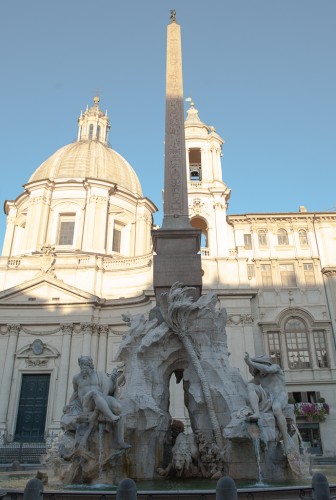
Fontana di Quattro Fiumi’s obelisk was built for the Roman Serapeum in 81 A.D. and symbolizes papal power.
If you were standing in this spot in the 15th century, you were probably hawking cabbage or carrots. By then, the arena had long fallen into disrepair so it was paved over to accommodate the city’s main market. The site became the center of Renaissance Rome.
Today, the market is gone. However, Piazza Navona remains a focal point of Rome. It is now one of the city’s most beautiful squares, thanks to Baroque rivals Bernini and Borromini.
You can’t miss Bernini’s central fountain, Fontana di Quattro Fiumi, or Fountain of the Four Rivers. Rivers Nile, Ganges, Danube and Plata represent what was then believed to be the world’s four continents. The fountain was commissioned by Pope Innocent X and Bernini completed it in 1651.
Fontana del Moro, on the piazza’s south end, was designed by Giacomo della Porta in 1576. In the 17th century, Bernini added the Moor holding a dolphin.
Fontana del Nettuno, which depicts Neptune battling a sea monster, was the last to join the piazza. Pope Gregory XIII, apparently an aesthete, wanted to balance out the other two fountains. So in the late 19th century, the Neptune sculpture was completed by Antonio della Bitta and Gregorio Zappalà added the creatures.
Looming over the piazza is Borromini’s 17th century Chiesa di Sant’Agnese in Agone. It is so named because St. Agnes was martyred right there in the Stadio di Domiziano. Pope Innocent X had a hand in this as well, as he commissioned this Baroque structure to be his familial chapel (his family’s palace was on the adjacent site).
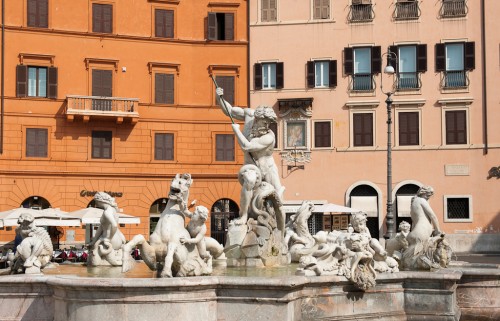
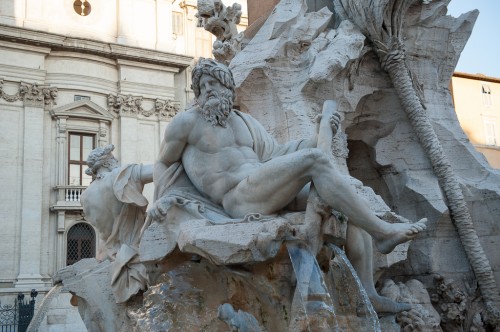
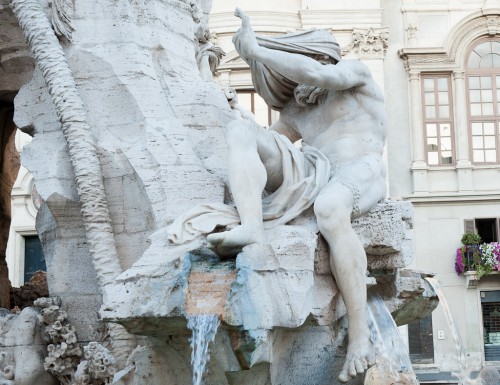
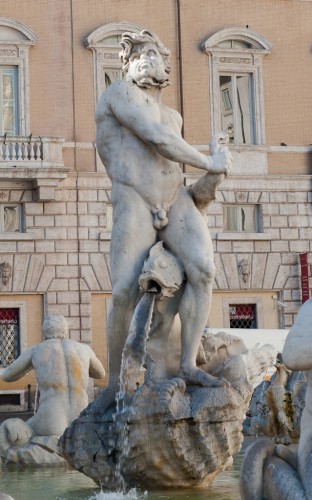
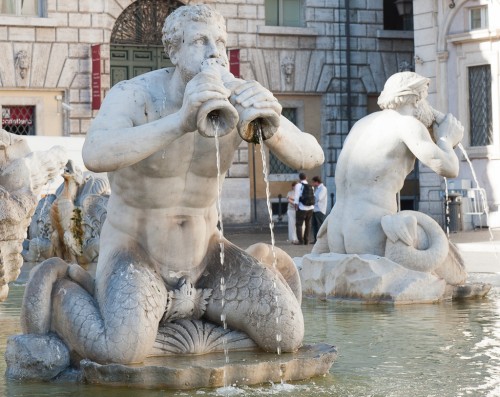
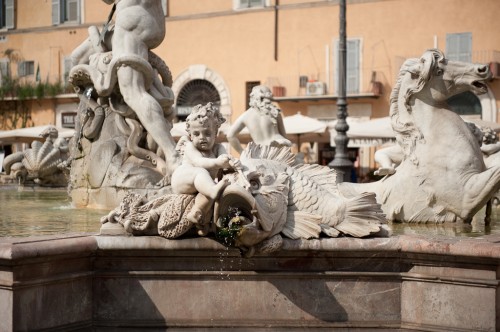
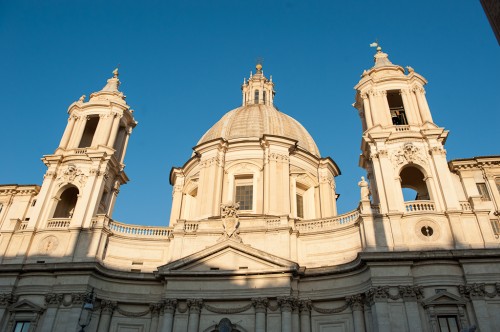
2 Responses to Piazza Navona